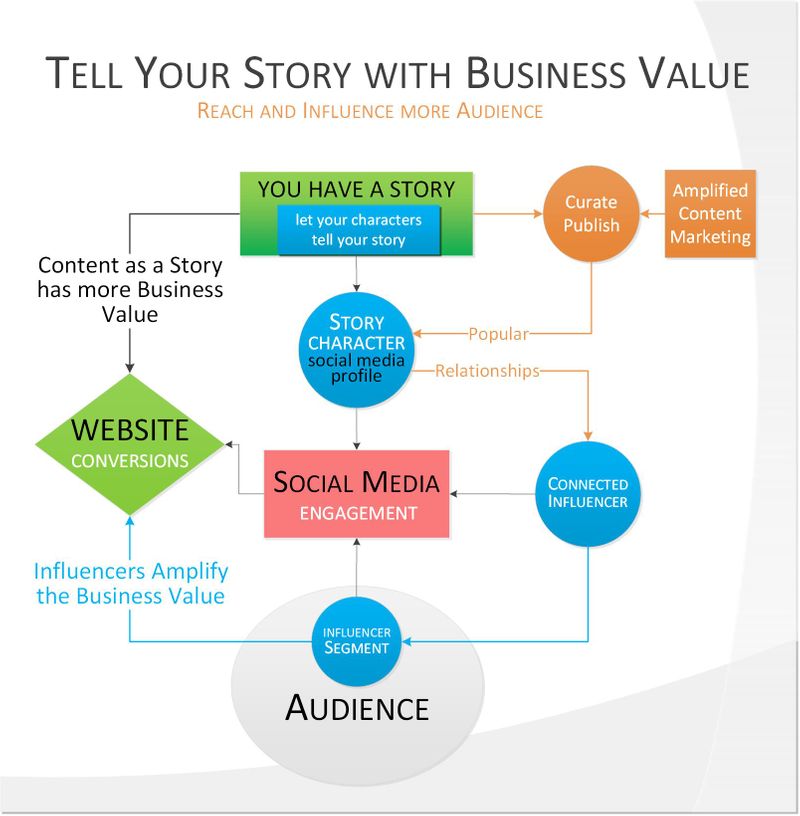Brand storytelling is an art and a science, and in today’s world, it had better be highly strategic.
Storytelling should convey not only what a company does, but who it is, and why—as well as tap into the emotions of its readers all at the same time.

Five steps to help tell your story
#1: Authentic
Storytelling should convey who you are as a company and not only focus on what you do. Improving your brand’s story involves tapping into the power of emotions and connecting with your consumers on a personal level. Be authentic. Make your readers feel something. Feelings cultivate brand affinity.
-
Loyal customers are willing to stick with a brand even if presented with meaningful and available alternatives if they feel an emotional connection. Strong emotional connections to retailers result in 32% more store visits and 46% more money spent, according to a recent Gallup poll.
-
There are seven emotions that result in stronger sales through increased customer connections, fear, frustration, hope, excitement, anger, fear of missing out, and desire to be first. If you can tell your story in a way that makes the consumer connect with one of these feelings, a sale may be imminent.

#2: Take a Stand
Make your storytelling demonstrate that you have a clear understanding of trends and current issues happening in your consumers’ world.
-
Quickly State the Problem: Today’s consumers are bombarded with messages; statistics show brands have eight seconds to get a consumer’s attention. If your message doesn’t resonate immediately, you’ve lost. Win your consumers over by demonstrating that you understand their challenges and can provide a solution.
-
Be Timely: What is top of mind today? Review and analyze current headlines and social trends to make connections whenever and wherever possible with your brand. Demonstrating this level of knowledge is a convincing way to engage consumers.
-
Share Your Mission: Define your brand responsibility in society. What is your corporate mission? What issues does your brand stand behind and how do you support those causes? Create communications that share the work you’re doing and publicize it via print, online, and social channels.
-
Take a Stand: Consumers are loyal to brands with a conscience and respond favorably to companies who own their truth.
#3: Technology
Technology should be at the heart of all your storytelling efforts. From initial concept to optimizing keywords, technology can amplify your brand message across all channels. However, technology for technology sake is an endless road. To achieve maximum results, your technology investment in brand storytelling should include:
Ease of Use: The ability to host multiple web pages, images, and conversations simultaneously, managed with a platform that lets you publish content and respond to consumer comments quickly and easily, is essential.
Distribution Across Channels: Your brand needs a solution that allows you to publish across any channel. Consumers want to hear from brands where and when they want, so if you aren’t delivering your message on their desired device at the time they want it, your brand isn’t maintaining a consistent user experience.
Measurement Tools: Successful marketers understand the importance of analyzing how and where content is consumed. A key to your success is adjusting content accordingly when measurement tools report that certain communications are underperforming.
#4: Change
Marketers and content contributors have to master different channels and content as new devices are introduced. Each channel comes with its own set of rules for display experiences and mastering those techniques is essential. Make sure that the quality of your communications doesn’t diminish when published across various channels.
Don’t be afraid to try new forms of content. The written word is just one of many ways brands are creating emotional connections with consumers. Videos and images can also be powerful communication tools that resonate.
#5: Stats
Your brand story is always a work in progress and it’s important to measure the success/reach of each component to discover which topics, types, and channels perform best. Pay attention to all the specifics you can: bounce rates, social metrics, conversions, leads, etc. Are you analyzing things like number of visits, sessions, channel-specific traffic and any other metrics that are important to your particular business?
You have a big opportunity to inspire consumers through effective storytelling and complementing this with the right technology is key to success. Implementing these tips will help you build stronger consumer relationships and increase engagement.
Source: econtentmag.com
